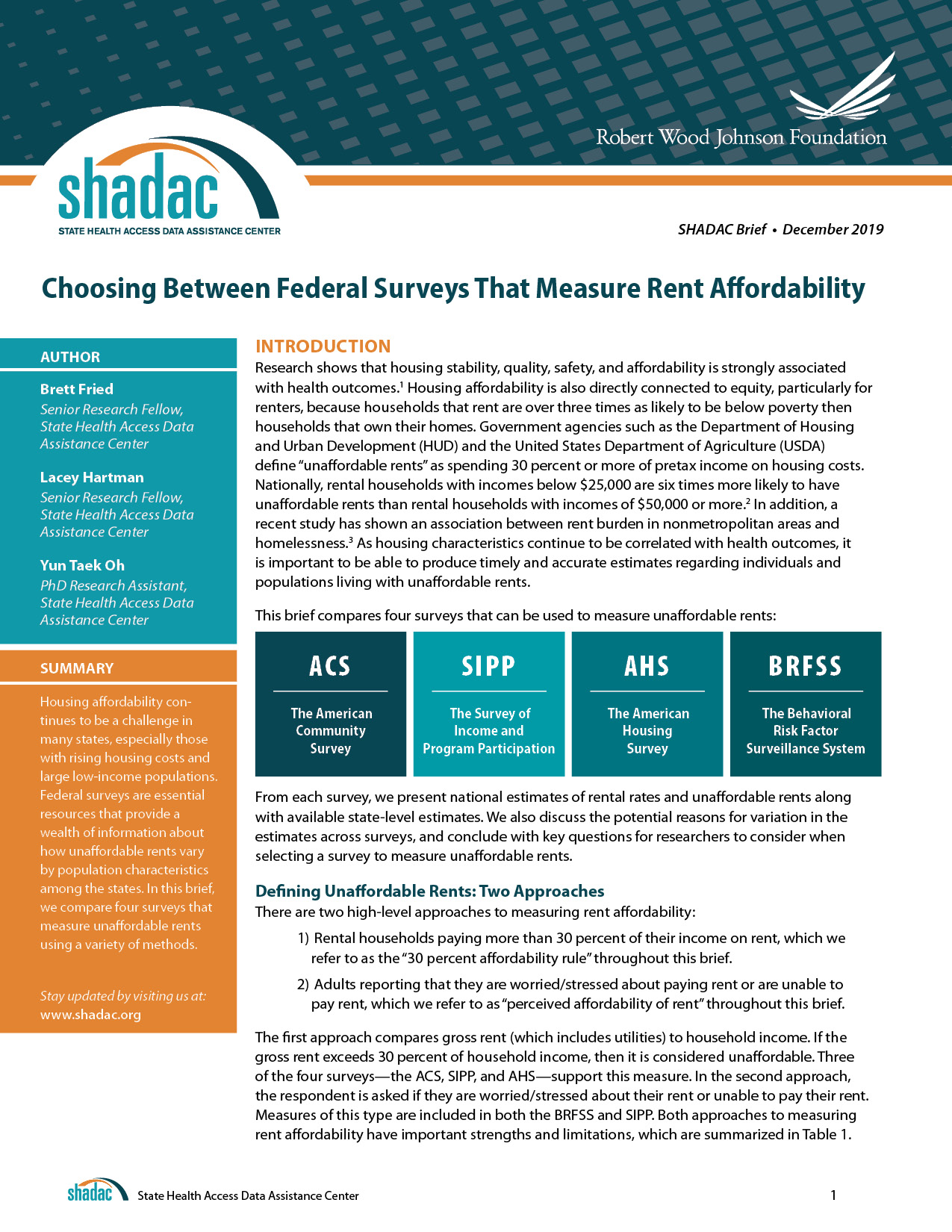Publication
Choosing Between Federal Surveys That Measure Rent Affordability
Earlier this year, the U.S. Department of Housing and Urban Development released a policy brief recognizing the growing housing affordability crisis in the United States, especially as it affects metropolitan areas and rental units.1 Lack of low-cost rental housing is one of the main factors fueling the crisis, according to Harvard University’s Joint Center for Housing Research, who pointed to a combination of rising median housing costs (11.0%) and falling incomes (-2.0%) over a fifteen-year period from 2001-2016.2
As housing affordability continues to have a demonstrated relationship with determining health outcomes, it is important to understand how this measure affects individuals and populations across the nation and how this varies by state.
A new brief from SHADAC researchers looks at the issue of unaffordable rents using and cross-comparing data from four different surveys:
The brief also explores the strengths and limitations of two different approaches to measuring rent affordability—the 30 percent affordability rule and perceived affordability rule—based on questions asked in each survey, and provides estimates on a national and state level for each approach where available.
Additionally, the brief includes reasons behind variation in the estimates across surveys, as well as key questions for researchers to consider when choosing which survey to use when measuring unaffordable rents.
Visit SHADAC and State Health Compare for More
SHADAC previously conducted an analysis into the issue of Unaffordable Rents in two blog posts: “Unaffordable Rents by Metropolitan Status: A New Breakdown on SHADAC’s State Health Compare” and “Housing Affordability Matters: Measuring and Addressing the Burden of Unaffordable Rents (Infographics)”; and as part of SHADAC’s “Measures That Matter” product series, “Examining Unaffordable Rents as a Social Determinant of Health (Infographics).”
The Unaffordable Rents measure is also available on SHADAC’s State Health Compare web tool. Data is available from 2012 through 2017 and can be broken down by race/ethnicity, household income categories, metropolitan status, Medicaid enrollment status, and disability status.
Learn more about the estimates used in this analysis, as well as other measures related to social and economic determinants of health, at State Health Compare. For more on how statistics are calculated using significance testing our methodological technical brief can be found here.
[1] U.S. Department of Housing and Urban Development. (2019). Addressing housing affordability in high-cost metropolitan areas in the United States. Retrieved from https://www.huduser.gov/portal/sites/default/files/pdf/Addressing-Housing-Affordability-High-Cost-Metropolitan-Areas.pdf
[2] Richardson, B. (2019, January 31). America’s housing affordability crisis only getting worse. Forbes. Retrieved from https://www.forbes.com/sites/brendarichardson/2019/01/31/americas-housing-affordability-crisis-only-getting-worse/#62e08461104b











